Carrots are a beloved garden staple, but they can be tricky to grow. However, by incorporating companion plants, you can maximize the growth and success of your carrot crop. In this comprehensive guide, I will introduce you to the best companion plants for carrots, sharing valuable information that will help you optimize your carrot cultivation and create a thriving symbiotic garden.
Key Takeaways:
- Companion planting can enhance the productivity and health of your carrot garden.
- Choosing the right companions for carrots can help repel pests and attract beneficial insects.
- Flowers and herbs like marigolds, oregano, and rosemary can offer multiple benefits to carrot plants.
- Tomatoes, onions, radishes, beans, and peas are excellent vegetable companions for carrots.
- Companion plants can attract beneficial insects and maintain a balanced ecosystem in your garden.
Understanding the Benefits of Companion Planting
Companion planting is an age-old agricultural practice that involves grouping plants together to support, protect, and complement one another. This method offers numerous benefits for both the plants and the garden as a whole.
One of the key advantages of companion planting is its ability to boost yields. When plants are strategically combined, they can enhance each other’s growth and productivity. Certain companion plants can provide shade or support for others, creating a microclimate that encourages optimal growth.
Companion planting also helps reduce pests in the garden. Some plant combinations naturally repel harmful insects, reducing the need for chemical pesticides. For example, marigolds emit a scent that deters pests, while attracting beneficial insects that prey on pests.
Another benefit of companion planting is improved soil fertility. Certain plant combinations, known as “dynamic accumulators,” have the ability to draw up nutrients from deep within the soil and make them available to other plants. By diversifying the types of plants in your garden, you can ensure a rich and balanced nutrient profile in the soil.
Space efficiency is another advantage of companion planting. By strategically combining plants with different growth habits, you can make the most of limited garden space. For example, tall plants such as sunflowers can provide shade for shorter plants like lettuce, maximizing the use of vertical space.
Companion planting also helps with weed suppression. When plants are grown close together, they create a dense canopy that shades the soil, preventing weed growth. This can significantly reduce the need for manual weeding or the use of herbicides.
By understanding the benefits of companion planting, you can harness the power of this gardening technique to create a thriving and sustainable garden ecosystem.
Choosing Carrot Companion Plants
When it comes to growing carrots, choosing the right companion plants is crucial for their success. The right companions can provide support, protection, and even help improve the overall health of your carrot plants. Some plants can also repel pests that commonly affect carrots, while others attract beneficial insects that aid in their growth. Here are some of the best companion plants for carrots:
- Onions: Onions make excellent companions for carrots. Not only do they help deter carrot flies, but they also improve soil health by releasing sulfur, which is beneficial for carrot growth.
- Tomatoes: Tomatoes are another great companion plant for carrots. They provide shade to the soil, which helps keep it cool and moist, especially during hot summer months. Tomatoes also produce a natural chemical called solanine, which repels pests that commonly affect carrots.
- Radishes: Radishes are often recommended as companion plants for carrots because they help loosen the soil, making it easier for carrot roots to penetrate and grow. Additionally, radishes can deter pests such as flea beetles and nematodes, protecting your carrot crop.
- Marigolds: Marigolds are not only beautiful, but they also offer multiple benefits to carrot plants. The strong scent of marigolds acts as a natural deterrent to pests like aphids and nematodes. Their bright flowers also attract beneficial insects such as ladybugs and lacewings, which prey on garden pests.
By incorporating these companion plants into your carrot garden, you can create a thriving ecosystem that promotes the growth and health of your carrots. The right combination of plants can repel pests, improve soil quality, and attract beneficial insects, resulting in robust and flavorful carrots.
Now that we’ve explored the best companion plants for carrots, let’s dive into the benefits of incorporating flowers and herbs into your carrot garden in the next section.
Flowers and Herbs as Carrot Companions
Incorporating flowers and herbs into your carrot garden can be a game-changer for your gardening success. These beautiful plants not only add visual appeal to your garden but also provide a range of benefits that support and enhance the growth of your carrots.
Marigolds: Vibrant Flowers and Pest-Repellent Fragrance
Marigolds are a popular choice as companion plants for carrots, and for good reason. Their vibrant flowers bring a burst of color to your garden, creating an inviting and joyful atmosphere. But marigolds offer more than just aesthetics.
These flowers have a natural pest-repellent fragrance that acts as a powerful deterrent against carrot rust fly, a common pest that can damage your carrot crop. By planting marigolds alongside your carrots, you not only protect them from harmful insects but also improve the quality and health of their roots.
Oregano and Cilantro: Natural Pest Deterrents and Flavor Enhancers
Oregano and cilantro are two flavorful herbs that not only add culinary delights to your kitchen but also benefit your carrot garden. These herbs have natural pest-deterring properties, helping to keep unwanted insects away from your carrots.
In addition to pest control, oregano and cilantro can enhance the flavor of your carrots. When planted alongside your carrots, these herbs infuse their delicious aroma and taste, resulting in more flavorful carrots that will excite your taste buds.
Borage: Beneficial Insects and Improved Plant Nutrition
Borage is a charming flowering plant that can be a valuable addition to your carrot garden. This plant has the unique ability to attract beneficial insects such as bees and predatory wasps. These insects play a vital role in pollination and pest control, further supporting the health and productivity of your carrots.
Furthermore, borage improves plant nutrition by accumulating minerals from deep in the subsoil and making them available to the neighboring plants. This enriches the soil and provides essential nutrients for the growth and development of your carrots.
Daffodils and Rosemary: Repelling Rodents and Deterring Pests
Daffodils repel rodents, and rosemary masks scents and deters pests.
While flowers and herbs are great companions for carrots, it is important to consider additional benefits they can provide. Daffodils, with their bright and cheerful blooms, serve as natural repellents for rodents that may cause damage to your carrot garden.
Rosemary, the aromatic and versatile herb, not only adds a delightful fragrance to your garden but also masks scents and deters pests. Its strong scent confuses and repels unwanted insects, protecting your carrots from potential damage.
By including these flowers and herbs as companion plants in your carrot garden, you create a diverse and harmonious environment that optimizes the growth and health of your carrots. Not only are you enhancing the visual appeal of your garden, but you are also nurturing a thriving ecosystem that benefits both you and your beloved carrot crop.
Vegetables that Thrive with Carrots
When it comes to companion planting, carrots have some excellent vegetable companions that can enhance their growth and overall health. By strategically planting compatible vegetables alongside carrots, you can create a thriving garden ecosystem. Here are some vegetables that make great companions for carrots:
Tomatoes
Tomatoes are not only a delicious addition to your garden, but they also make excellent carrot companions. They provide shade to the carrot plants, protecting them from excessive heat and sunlight. Additionally, tomatoes emit a natural chemical called solanine, which can help repel pests such as aphids and whiteflies that may harm your carrots.
Onions
Onions are a natural pest deterrent and make great companions for carrots. Their strong odor helps repel carrot flies, which can be detrimental to carrot crops. By planting onions alongside your carrots, you can reduce the risk of carrot fly infestations and promote healthier carrot growth.
Radishes
Radishes are an excellent companion for carrots due to their soil-loosening properties. Their roots help break up compacted soil, making it easier for carrot roots to grow and expand. Radishes also have a unique ability to deter pests such as flea beetles, which can damage carrot foliage. By planting radishes with carrots, you can create a mutually beneficial environment.
Beans and Peas
Beans and peas are legume plants that fix atmospheric nitrogen into the soil, benefiting the growth of not only themselves but also neighboring plants like carrots. Carrots require a steady supply of nitrogen for optimal growth, and beans and peas provide that by harnessing nitrogen from the air and converting it into a form that is easily accessible to plants. This symbiotic relationship enhances the overall health and productivity of your carrot crop.
By interplanting these vegetable companions with your carrots, you can create a diverse and mutually beneficial garden. Here’s a visually engaging table summarizing the benefits of these carrot companion vegetables:
| Companion Vegetable | Benefits |
|---|---|
| Tomatoes | Provide shade and repel pests |
| Onions | Deter carrot flies |
| Radishes | Loosen soil and deter pests |
| Beans and Peas | Fix nitrogen in the soil |
By incorporating these carrot companion vegetables into your garden, you can create a harmonious environment that promotes the health and productivity of your carrots. The synergistic relationships between these vegetables provide natural pest control, improve soil fertility, and promote overall garden vitality.
Attracting Beneficial Insects and Deterring Pests
Companion planting is a fantastic strategy for creating a balanced ecosystem in your carrot garden. By attracting beneficial insects and deterring pests, you can protect your carrots naturally and promote their health. Let’s explore how companion planting can help you achieve this!
Attracting Beneficial Insects
Beneficial insects play a crucial role in controlling pests and maintaining a healthy garden. By planting flowers that attract these helpful creatures, you can create an inviting environment that encourages their presence.
“Planting flowers such as nasturtiums and marigolds can attract beneficial insects like ladybugs and lacewings.”
Nasturtiums, with their vibrant blooms and enticing fragrance, are known to attract ladybugs. These charming beetles feast on aphids, mites, and other harmful insects that can damage your carrots. Lacewings, on the other hand, are attracted to marigolds. These delicate insects are voracious eaters of aphids, caterpillars, and whiteflies, further enhancing pest control in your garden.
Deterring Pests
Companion planting not only attracts beneficial insects but also repels pests that can harm your carrot crop. By strategically interplanting specific plants, you can create a natural barrier against unwanted pests.
“Certain plants like sage and basil have pest-repelling properties, protecting your carrots naturally.”
Sage, with its strong aroma, acts as a deterrent for pests like cabbage moths and carrot flies. Its intense fragrance masks the scent of carrots, making them less attractive to these harmful insects. Basil, with its aromatic leaves, repels mosquitoes, flies, and thrips, helping to safeguard your precious carrot plants.
By incorporating these pest-repelling plants into your carrot garden, you create an environment that is naturally hostile to pests, reducing the need for harsh chemical pesticides.
Companion planting for pest control is an eco-friendly and effective way to protect your carrots and promote their growth. By attracting beneficial insects and deterring pests, you can maintain a healthy garden ecosystem while enjoying a bountiful harvest of delicious homegrown carrots.
Considerations for Carrot Companion Planting
When implementing carrot companion planting, there are several factors to consider. By taking these considerations into account, you can ensure a successful carrot companion planting strategy.
Companion Plant Spacing
Proper spacing between companion plants is crucial to avoid competition and ensure each plant has ample room to grow. Consider the mature size of each plant and provide sufficient space for their root systems to avoid overcrowding.
Nutrient Requirements
Understanding the nutrient requirements of both carrots and their companion plants is essential for optimal growth. Some plants may have specific nutrient needs or contribute beneficial nutrients to the soil. By selecting companions with complementary nutrient requirements, you can create a balanced environment that supports the healthy development of your carrot crop.
Root Depth
Root depth is another consideration when planning carrot companion planting. Carrots have a long taproot, while other plants may have shallower root systems. It’s important to choose companion plants with compatible root depths to prevent root competition and allow for efficient nutrient uptake.
Plant Incompatibilities
Avoiding plant incompatibilities is crucial for successful companion planting. Some plant combinations can have negative interactions, such as inhibiting growth or attracting pests. Research and ensure that your chosen companions are compatible with carrots to create a harmonious and beneficial garden ecosystem.
| Consideration | Description |
|---|---|
| Companion Plant Spacing | Ensure adequate spacing between companion plants to avoid competition and provide room for growth. |
| Nutrient Requirements | Understand the nutrient needs of both carrots and companion plants to create a balanced soil environment. |
| Root Depth | Select companion plants with compatible root depths to prevent root competition and nutrient depletion. |
| Plant Incompatibilities | Avoid combinations of plants that may have negative interactions or attract pests. |
Creating an Optimal Garden Layout
When it comes to successful carrot companion planting, designing a well-thought-out garden layout is essential. By strategically arranging your plants, you can optimize space efficiency, enhance pest management, and promote soil fertility. Let’s explore some key considerations to create an optimal garden layout for your carrot companions.
Intercropping for Space Efficiency and Pest Management
Intercropping is a clever technique that involves planting different companion plants alongside your carrots. This method maximizes space utilization and helps deter pests naturally. By intermixing crops with different growth habits and pest-repelling properties, you create a diverse ecosystem that confuses and discourages pests from settling in your garden.
Intercropping is like creating a friendly neighborhood for your carrot plants, where their companion plants provide support, protection, and defense against common garden pests.
For example, planting aromatic herbs like rosemary and sage near your carrots can mask the scent of the vulnerable carrots, making them less attractive to pests. Additionally, marigolds and nasturtiums not only add beauty to your garden, but they also repel nematodes, aphids, and other harmful insects that threaten the health of your carrots.
Considering Plant Families and Soil Fertility
Another crucial aspect of an optimal garden layout is considering the nutrient requirements of different plant families. Carrots belong to the Apiaceae family, which includes other plants like celery, dill, and parsley. These plants have similar nutrient needs and growth patterns, making them suitable companions.
Rotating your crops within the same family from one growing season to the next helps prevent nutrient depletion and minimizes the risk of soil-borne diseases. This practice ensures that each crop receives the specific nutrients it requires and preserves the overall fertility of your garden soil.
By strategically grouping plants from the same plant family together, you create a balanced ecosystem that promotes soil fertility and healthy growth.
| Good Companions for Carrots | Plant Family |
|---|---|
| Celery | Apiaceae |
| Dill | Apiaceae |
| Parsley | Apiaceae |
By referring to this table and similar resources, you can easily identify other plants that belong to the same plant family as carrots and incorporate them into your garden layout.
An optimal garden layout for carrot companion planting ensures space efficiency, pest management, and soil fertility. Remember to intercrop your carrots with compatible companion plants to maximize every inch of your garden and naturally deter pests. Consider the nutrient requirements of different plant families to maintain soil fertility and prevent nutrient depletion. By implementing these strategies, you can create a harmonious garden that supports the health and productivity of your carrot plants.
Tips for Growing Carrots
Growing carrots successfully requires attention to specific cultivation practices. Here are some tips to help you cultivate healthy and robust carrots:
- Choose the right soil conditions: Carrots thrive in loose, well-drained soil with good fertility. Prepare the soil by removing any rocks or debris and adding organic matter such as compost to improve its texture and nutrient content.
- Ensure proper watering: Carrots require consistent moisture for optimum growth. Water deeply and regularly, ensuring the soil stays evenly moist. Avoid overwatering, as it can lead to rot and fungal diseases.
- Implement pest control measures: Protect your carrot crop from pests by incorporating companion plants that repel pests and attract beneficial insects. Additionally, consider using organic pest deterrents, such as neem oil or insecticidal soap, to keep pests at bay.
- Harvest at the right time: Carrots are ready for harvesting when they have reached their full size and color. Gently pull them from the soil, taking care not to damage the roots. Harvesting at the right time ensures optimal flavor and texture.
By following these tips, you can create optimal growing conditions for your carrots and enjoy a bountiful harvest.
Planting and Caring for Carrots
Proper planting and care are essential for successful carrot cultivation. By following the right techniques and providing the necessary care, you can ensure optimal growth and yield for your carrot plants. Here are some important factors to consider:
-
Planting Depth and Soil Moisture
Carrot seeds should be planted at a depth of about 0.25 to 0.5 inches. Planting the seeds too deep can inhibit germination, while planting them too shallow can lead to drying out and poor growth. It’s important to maintain consistent soil moisture throughout the germination and growth stages. Keep the soil evenly moist, but not waterlogged, to promote healthy root development and prevent rot.
-
Thinning Seedlings
After the carrot seedlings emerge, it’s crucial to thin them out to provide adequate spacing for root development. Thin the seedlings to a spacing of about 2 inches apart. Crowded seedlings can result in stunted and misshapen carrots. Thinning also allows better access to light and nutrients for the remaining plants.
-
Fertilization
Carrots benefit from regular fertilization to ensure optimal growth and nutrient uptake. Use compost or organic fertilizers to provide the necessary nutrients without risking the risk of over-fertilization, which can lead to forked or hairy carrots. Apply the fertilizer according to the package instructions, taking care not to directly contact the carrot foliage to avoid burning the plants.
By paying attention to seed depth, soil moisture, thinning, and fertilization, you can give your carrot plants the best conditions for success. With proper care, you’ll be rewarded with a bountiful harvest of delicious, homegrown carrots!
Maintaining a Healthy Carrot Garden
When it comes to maintaining a healthy carrot garden, there are a few key practices to keep in mind. Proper weed control, disease prevention, and crop rotation are essential for maximizing the health and productivity of your carrot plants.
Weed Control
Weeds can compete with carrots for nutrients, water, and sunlight, hindering their growth. Implementing effective weed control measures is crucial to ensure the optimal development of your carrot garden. One method of weed control is mulching, which involves covering the soil around the carrots with a layer of organic material, such as straw or wood chips. This helps to suppress weed growth and conserve soil moisture. Additionally, regular cultivation using a hoe or hand tools can help to remove weeds before they become established.
Disease Prevention
Preventing diseases is essential for maintaining a healthy carrot garden. Carrots are susceptible to various diseases, including powdery mildew, root rot, and carrot fly infestation. To minimize the risk of these diseases, practicing crop rotation is highly recommended. This involves planting carrots in a different location each year, as it helps to prevent the buildup of pathogens in the soil. Proper sanitation is also essential, ensuring that any diseased plants or plant debris are removed and discarded properly.
Crop Rotation
Crop rotation is an effective technique in maintaining soil health and preventing pest and disease buildup. By rotating the crops in your garden, you disrupt the life cycles of pests and diseases, making it harder for them to establish and persist. It also helps to balance nutrient levels in the soil, as different crops have varying nutrient requirements. When planning your crop rotation, consider rotating carrots with plants from different families, such as legumes, leafy greens, or brassicas.
| Weed Control Methods | Disease Prevention Strategies | Crop Rotation Examples |
|---|---|---|
|
|
|
Keeping Your Carrot Garden Healthy and Productive
By implementing these maintenance practices of weed control, disease prevention, and crop rotation, you can ensure the health and productivity of your carrot garden. Maintaining a weed-free environment, preventing disease outbreaks, and rotating crops will create an optimal growing condition for your carrots, resulting in a bountiful harvest of flavorful and nutritious carrots.
Conclusion
Carrot companion planting offers a multitude of benefits that can greatly enhance the productivity and health of your carrot garden. By carefully selecting the right companion plants and utilizing natural pest control methods, you can create a symbiotic environment that fosters successful carrot cultivation.
The benefits of carrot companion planting are two-fold. Firstly, certain companion plants repel pests that are harmful to carrots, reducing the need for chemical pesticides. This not only promotes a healthier garden ecosystem but also ensures that your carrots are free from harmful residues. Secondly, companion plants attract beneficial insects such as ladybugs and lacewings, which prey on pests and contribute to natural pest control. This helps to maintain a balanced and thriving garden.
With proper planning and care, you can optimize the productivity of your garden and enjoy a bountiful harvest of delicious, homegrown carrots. Carrot companion planting not only maximizes garden space and improves soil fertility but also adds beauty and diversity to your garden. By incorporating companion plants, you are creating a harmonious environment that benefits both your carrots and the overall health of your garden.

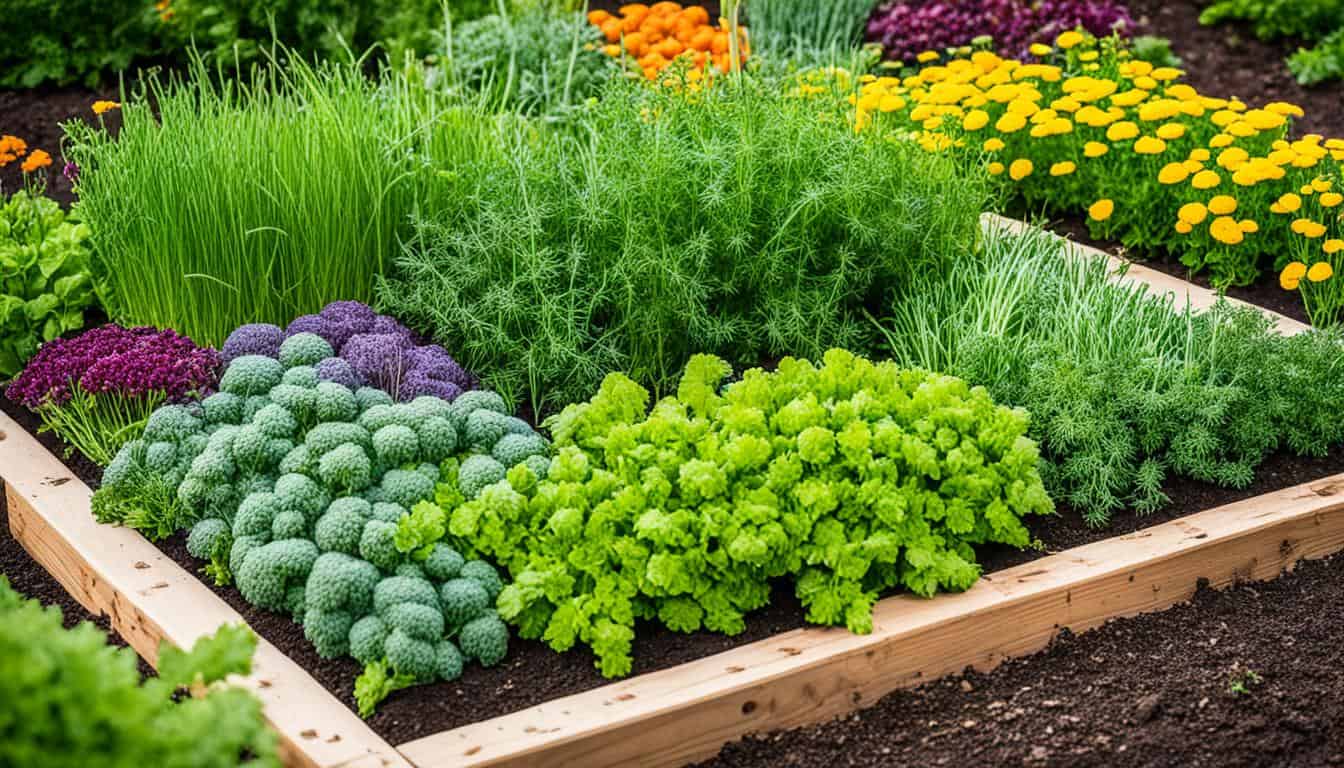
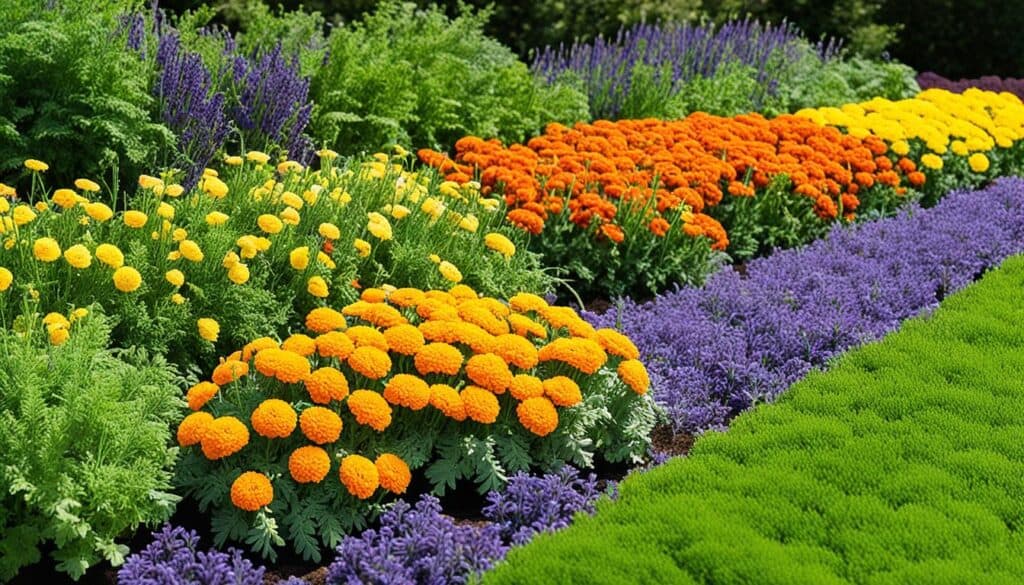
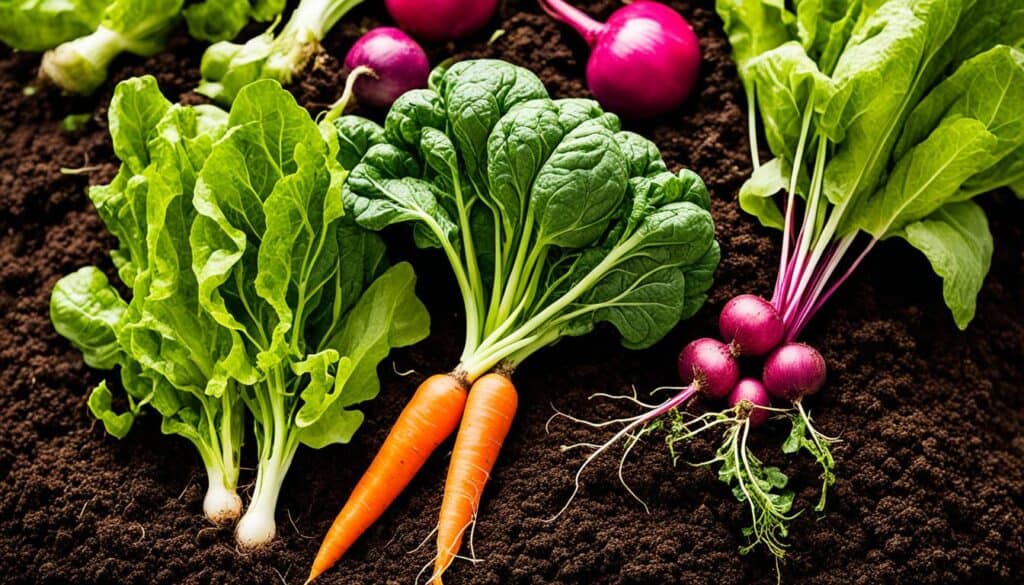
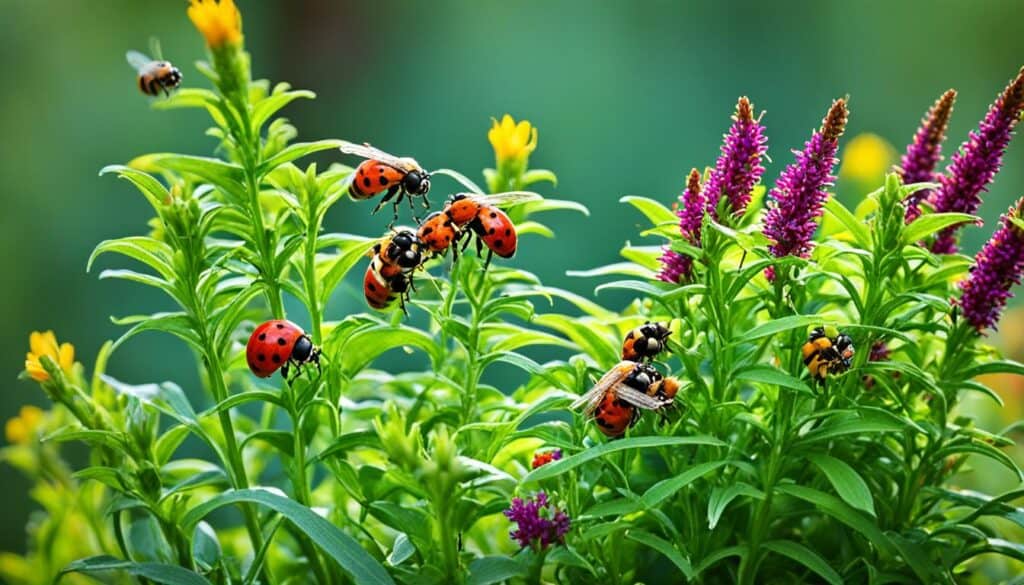
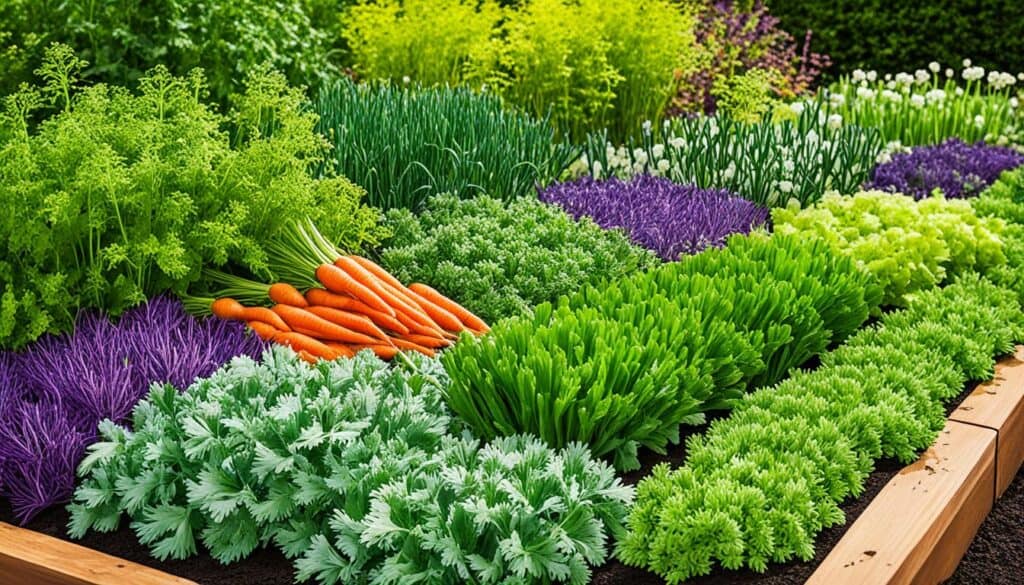
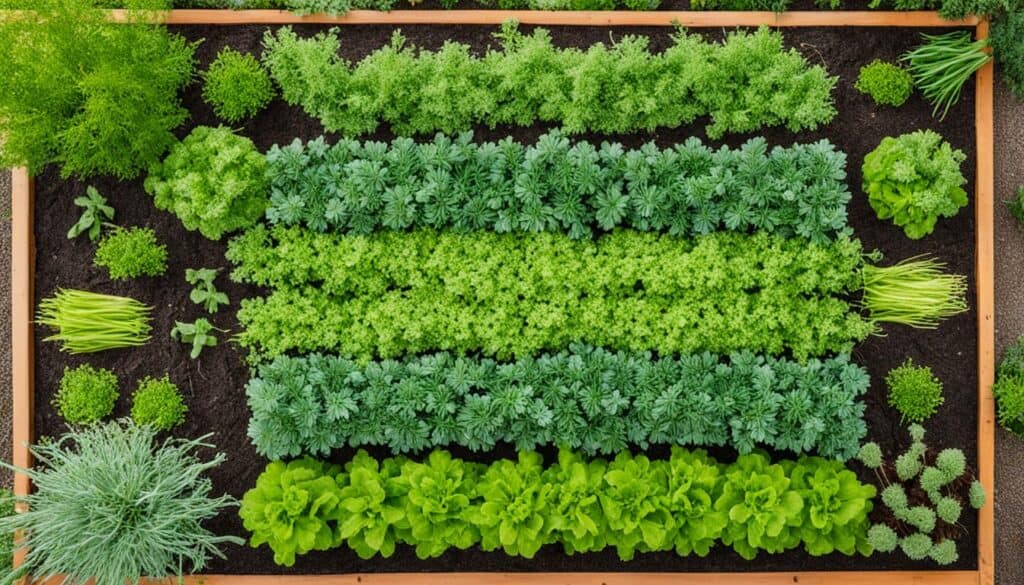



Leave a Reply